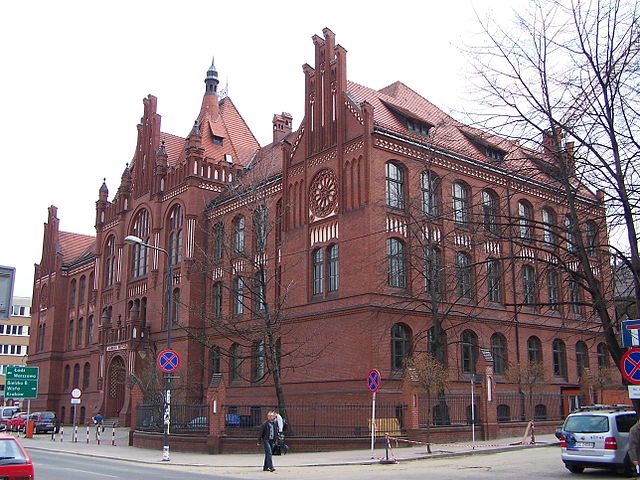Henryk Mikołaj Górecki was a Polish composer of contemporary classical music. According to critic Alex Ross, no recent classical composer has had as much commercial success as Górecki. He became a leading figure of the Polish avant-garde during the post-Stalin cultural thaw. His Anton Webern-influenced serialist works of the 1950s and 1960s were characterized by adherence to dissonant modernism and influenced by Luigi Nono, Karlheinz Stockhausen, Krzysztof Penderecki and Kazimierz Serocki. He continued in this direction throughout the 1960s, but by the mid-1970s had changed to a less complex sacred minimalist sound, exemplified by the transitional Symphony No. 2 and the Symphony No. 3. This later style developed through several other distinct phases, from such works as his 1979 Beatus Vir, to the 1981 choral hymn Miserere, the 1993 Kleines Requiem für eine Polka and his requiem Good Night.
Górecki in 1993
View of Rydułtowy, where Górecki taught for two years from 1951 to 1953
The Academy of Music in Katowice where Górecki lectured from 1968
The Symphony No. 3, Op. 36, also known as the Symphony of Sorrowful Songs, is a symphony in three movements composed by Henryk Górecki in Katowice, Poland, between October and December 1976. The work is indicative of the transition between Górecki's earlier dissonant style and his later more tonal style and "represented a stylistic breakthrough: austerely plaintive, emotionally direct and steeped in medieval modes". It was premièred on 4 April 1977, at the Royan International Festival, with Stefania Woytowicz as soprano and Ernest Bour as conductor.
The Palace in Zakopane; the former Nazi Gestapo prison was where the composer took an inscription scrawled on a cell wall for the composition of his symphony.
Jean Fouquet, Madonna and Child, c. 1450.
Lemminkäinen's Mother (1897) by Akseli Gallen-Kallela is an earlier evocation of the themes of motherhood and war explored in Górecki's Third Symphony. This work depicts a scene from the Finnish epic poem Kalevala.






